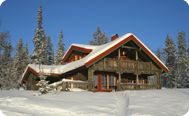Download a PDF of this article 
Winter Gluing Tips
Every year, we see a rash of weather-related problems. Most of them fall into one of the following categories and are easily corrected. Here are four of the most common complaints and steps to take before they become a problem.
- Open joints. Open joints at the ends of edge-glued panels are a common complaint during the winter. In most cases, they are caused by rapid drying of the panels after gluing. Make sure that the moisture content of the wood is six-eight percent (closer to 6% is better), and that the relative humidity in the plant is 30-40%. The use of an end-sealer is also recommended.
- Under-cured joints. Under-cured joints are common when plant and wood temperatures have dropped. If you are seeing an increase in panel failures, allow the panels to remain clamped an extra 10 to 15 minutes. If you are using radio frequency equipment, try adding five to 10 seconds onto the cure cycle.
- Frozen glue. We make every effort to avoid damage to our products due to freezing in transit. During extremely cold temperatures, we will suspend shipments altogether. Try ordering your next shipment a couple of days earlier to ensure supply. If you receive frozen glue, contact Franklin customer service immediately for assistance.
- Glue line chalking. A white glue squeeze out means that plant and wood are too cold for the adhesive being used. The "minimum use temperature" is included on our data sheets as a guide. Try keeping the wood and plant temperatures at least a few degrees above this value for safety.